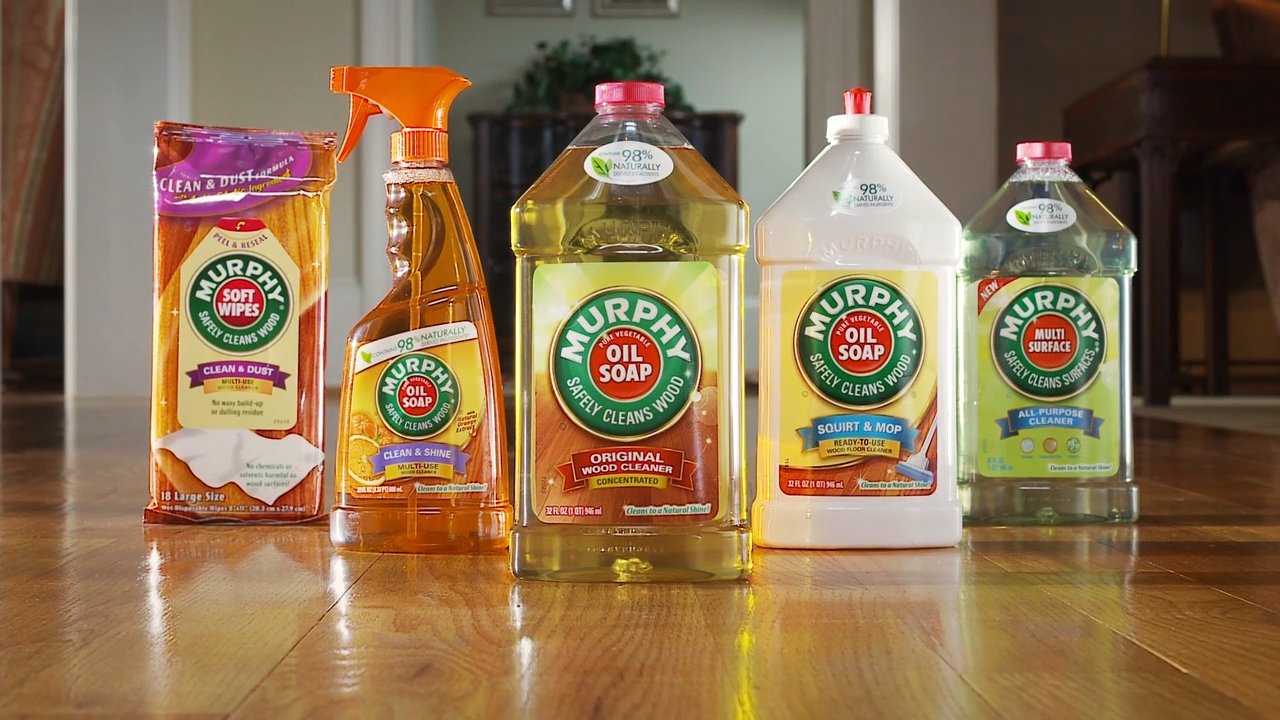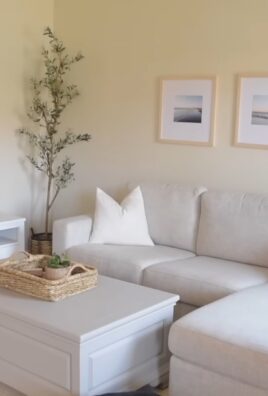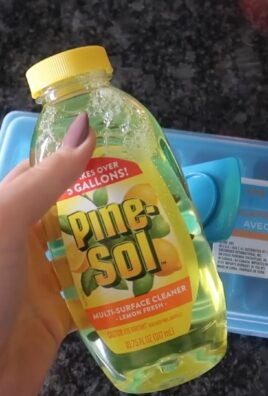Murphy’s Oil Soap Cleaning Tips: Unlock the secrets to a sparkling clean home with a touch of tradition! Have you ever wondered how your grandmother kept her furniture looking so pristine, or how antique shops manage to maintain that timeless glow? The answer might just lie in a bottle of Murphy’s Oil Soap. This isn’t just another cleaning product; it’s a time-tested solution with roots stretching back to the late 19th century, when it was first created to care for fine wood finishes.
For generations, Murphy’s Oil Soap has been a trusted name in households, offering a gentle yet effective way to clean and preserve wood surfaces. But its uses extend far beyond just wooden furniture! In this DIY guide, I’m going to share some amazing Murphy’s Oil Soap cleaning tips and hacks that will revolutionize your cleaning routine. From tackling stubborn grime to restoring the natural luster of your belongings, you’ll be amazed at the versatility of this humble cleaner.
In today’s world, we’re all looking for ways to simplify our lives and reduce our reliance on harsh chemicals. That’s where Murphy’s Oil Soap truly shines. It’s a plant-based, biodegradable option that’s safe for your family, your pets, and the environment. Plus, it’s incredibly cost-effective! So, ditch those expensive specialty cleaners and get ready to discover the power of this classic cleaning solution. Let’s dive in and explore the many ways you can use Murphy’s Oil Soap to create a cleaner, healthier, and more beautiful home!

Unlocking the Cleaning Power of Murphy’s Oil Soap: A DIY Guide
Hey there, fellow cleaning enthusiasts! I’m excited to share my favorite DIY cleaning hacks using the amazing Murphy’s Oil Soap. This stuff isn’t just for wood floors; it’s a versatile cleaner that can tackle a surprising number of household messes. I’ve been using it for years, and I’m constantly discovering new ways to make my home sparkle with its gentle yet effective formula. Let’s dive into some of my go-to methods!
Understanding Murphy’s Oil Soap
Before we jump into the DIY projects, let’s quickly cover what makes Murphy’s Oil Soap so special. It’s a concentrated cleaner formulated with natural ingredients, primarily vegetable oil. This gives it a gentle cleaning action that’s safe for many surfaces, especially wood. However, always test in an inconspicuous area first, just to be safe!
DIY Cleaning Hacks with Murphy’s Oil Soap
Here’s where the fun begins! I’ve broken down the hacks into categories for easier navigation.
Cleaning Wood Surfaces
This is where Murphy’s Oil Soap truly shines! It’s designed to clean and condition wood, leaving it looking refreshed and revitalized.
* What you’ll need:
* Murphy’s Oil Soap
* Warm water
* A clean bucket
* A soft cloth or mop (microfiber works great)
* Optional: A second bucket with clean water for rinsing
* Step-by-step instructions:
1. Prepare your cleaning solution: In your bucket, mix Murphy’s Oil Soap with warm water according to the instructions on the bottle. Typically, it’s about 1/4 cup of soap per gallon of water, but always double-check the label.
2. Dampen your cloth or mop: Dip your cloth or mop into the cleaning solution and wring it out thoroughly. You want it to be damp, not soaking wet. Excess water can damage wood.
3. Clean the wood surface: Gently wipe the wood surface with the damp cloth or mop, following the grain of the wood. Avoid applying too much pressure.
4. Rinse (optional): If you feel the surface is too soapy, you can lightly rinse it with a clean, damp cloth. Be sure to wring out the cloth well to prevent water damage.
5. Dry the surface: Use a clean, dry cloth to wipe away any remaining moisture. This will help prevent water spots and keep your wood looking its best.
Cleaning Leather Furniture
Yes, you can use Murphy’s Oil Soap on leather! It’s a gentle way to clean and condition leather furniture, keeping it soft and supple.
* What you’ll need:
* Murphy’s Oil Soap
* Warm water
* Two soft cloths (microfiber is ideal)
* A spray bottle (optional)
* Step-by-step instructions:
1. Prepare your cleaning solution: Mix a very small amount of Murphy’s Oil Soap with warm water. I recommend starting with a ratio of about 1 teaspoon of soap per cup of water. You can either mix it in a bowl or in a spray bottle.
2. Test in an inconspicuous area: Before cleaning the entire piece of furniture, test the solution on a hidden area, like the back or under a cushion. This will ensure that the soap doesn’t discolor or damage the leather.
3. Apply the cleaning solution: Lightly dampen one of your soft cloths with the cleaning solution. If you’re using a spray bottle, lightly mist the cloth.
4. Gently wipe the leather: Gently wipe the leather surface with the damp cloth, using circular motions. Avoid applying too much pressure or saturating the leather.
5. Wipe with a clean, damp cloth: Use the second clean, damp cloth to wipe away any remaining soap residue.
6. Dry the leather: Allow the leather to air dry completely. Avoid using a hairdryer or placing it in direct sunlight, as this can dry out the leather.
7. Condition (optional): Once the leather is dry, you can apply a leather conditioner to help keep it soft and supple. Follow the instructions on the conditioner label.
Cleaning Kitchen Cabinets
Grease and grime can build up on kitchen cabinets over time. Murphy’s Oil Soap can help cut through the grease and leave your cabinets looking clean and fresh.
* What you’ll need:
* Murphy’s Oil Soap
* Warm water
* A clean bucket
* A soft cloth or sponge
* Optional: An old toothbrush for hard-to-reach areas
* Step-by-step instructions:
1. Prepare your cleaning solution: Mix Murphy’s Oil Soap with warm water in your bucket, following the instructions on the bottle.
2. Dampen your cloth or sponge: Dip your cloth or sponge into the cleaning solution and wring it out well.
3. Wipe the cabinets: Gently wipe the cabinets with the damp cloth or sponge, paying attention to areas with grease or grime buildup.
4. Scrub stubborn areas: For stubborn areas, use an old toothbrush to gently scrub away the grime.
5. Rinse (optional): If you feel the cabinets are too soapy, you can lightly rinse them with a clean, damp cloth.
6. Dry the cabinets: Use a clean, dry cloth to wipe away any remaining moisture.
Cleaning Painted Walls
Believe it or not, Murphy’s Oil Soap can even be used to clean painted walls! It’s a gentle way to remove dirt and smudges without damaging the paint.
* What you’ll need:
* Murphy’s Oil Soap
* Warm water
* A clean bucket
* A soft sponge or cloth
* Optional: A spray bottle
* Step-by-step instructions:
1. Prepare your cleaning solution: Mix a small amount of Murphy’s Oil Soap with warm water in your bucket. I recommend starting with a ratio of about 1 tablespoon of soap per gallon of water. You can also mix it in a spray bottle.
2. Test in an inconspicuous area: Before cleaning the entire wall, test the solution on a hidden area, like behind a piece of furniture. This will ensure that the soap doesn’t damage the paint.
3. Apply the cleaning solution: Lightly dampen your sponge or cloth with the cleaning solution. If you’re using a spray bottle, lightly mist the wall.
4. Gently wipe the wall: Gently wipe the wall with the damp sponge or cloth, using circular motions. Avoid applying too much pressure or saturating the wall.
5. Wipe with a clean, damp cloth: Use a clean, damp cloth to wipe away any remaining soap residue.
6. Dry the wall: Allow the wall to air dry completely.
Cleaning Vinyl Floors
Murphy’s Oil Soap is a great option for cleaning vinyl floors, leaving them clean and shiny without damaging the surface.
* What you’ll need:
* Murphy’s Oil Soap
* Warm water
* A clean bucket
* A mop (sponge or microfiber)
* Step-by-step instructions:
1. Prepare your cleaning solution: Mix Murphy’s Oil Soap with warm water in your bucket, following the instructions on the bottle.
2. Mop the floor: Dip your mop into the cleaning solution and wring it out well. Mop the floor in sections, overlapping each stroke slightly.
3. Rinse (optional): If you feel the floor is too soapy, you can lightly rinse it with clean water. Use a clean mop and wring it out well.
4. Dry the floor: Allow the floor to air dry completely. You can also use a clean, dry mop to speed up the drying process.
Important Considerations
* Always test in an inconspicuous area first: This is crucial, especially when cleaning delicate surfaces like leather or painted walls.
* Use sparingly: A little Murphy’s Oil Soap goes a long way. Using too much can leave a soapy residue.
* Wring out your cloths and mops well: Excess water can damage wood and other surfaces.
* Follow the instructions on the bottle: The recommended dilution ratios may vary depending on the product and the surface you’re cleaning.
* Don’t use on unfinished wood: Murphy’s Oil Soap is designed for finished wood surfaces.
Final Thoughts
I hope these DIY cleaning hacks have inspired you to explore the versatility of Murphy’s Oil Soap! It’s a fantastic, gentle cleaner that can

Conclusion
So, there you have it! Unlocking the true potential of Murphy’s Oil Soap goes far beyond just a simple floor cleaning routine. We’ve explored how this versatile cleaner can be your secret weapon for tackling a multitude of household tasks, from reviving tired furniture to gently caring for delicate leather goods. The beauty of this DIY approach lies not only in its cost-effectiveness but also in its eco-friendliness. By diluting and customizing your cleaning solutions, you’re reducing your reliance on harsh chemicals and contributing to a healthier home environment.
The key takeaway is that Murphy’s Oil Soap cleaning tips are about more than just cleaning; they’re about caring for your belongings and creating a more sustainable lifestyle. It’s about understanding the power of a simple, natural ingredient and harnessing its potential to keep your home sparkling and your cherished items looking their best.
Don’t be afraid to experiment! Try adding a few drops of your favorite essential oil to your diluted Murphy’s Oil Soap solution for a refreshing scent boost. Lavender, lemon, or eucalyptus can add a touch of aromatherapy to your cleaning routine. For tougher stains on wood, consider creating a paste of Murphy’s Oil Soap and baking soda for a gentle yet effective scrubbing action. Always test in an inconspicuous area first, of course!
We’ve shared our favorite tips and tricks, but the real magic happens when you start experimenting and discovering new uses for Murphy’s Oil Soap in your own home. The possibilities are truly endless.
We wholeheartedly encourage you to give these DIY cleaning methods a try. You’ll be amazed at the results and how much money you can save by ditching those expensive, specialized cleaners. More importantly, you’ll be contributing to a cleaner, greener planet.
Once you’ve experienced the transformative power of Murphy’s Oil Soap, we want to hear all about it! Share your own tips, tricks, and before-and-after photos in the comments below. Let’s create a community of savvy cleaners who are passionate about natural, effective, and affordable home care. Your experiences can inspire others to embrace the versatility of Murphy’s Oil Soap and discover its many hidden benefits. So, grab your bottle of Murphy’s Oil Soap, get cleaning, and let’s share the sparkle!
Frequently Asked Questions (FAQ)
What exactly is Murphy’s Oil Soap, and what makes it so versatile?
Murphy’s Oil Soap is a cleaning product formulated with natural ingredients, primarily vegetable oil. Its gentle, pH-balanced formula makes it suitable for cleaning a wide range of surfaces, including wood, leather, and even some fabrics. Unlike harsh chemical cleaners, Murphy’s Oil Soap cleans without stripping away natural oils, which is particularly beneficial for preserving the integrity of wood furniture and leather goods. Its versatility stems from its ability to be diluted to varying concentrations, allowing you to customize the cleaning power to suit the specific task at hand. This adaptability is what makes it a go-to solution for so many different cleaning needs.
Can I use Murphy’s Oil Soap on all types of wood? Are there any exceptions?
While Murphy’s Oil Soap is generally safe for most wood surfaces, it’s always best to exercise caution and test in an inconspicuous area first. Avoid using it on unfinished wood, as the soap can penetrate the porous surface and potentially cause staining or discoloration. For antique furniture or delicate wood finishes, consult with a professional before using any cleaning product, including Murphy’s Oil Soap. Also, be mindful of wood floors with wax finishes, as Murphy’s Oil Soap can sometimes dull the wax over time. In these cases, consider using a cleaner specifically designed for waxed wood floors.
How do I properly dilute Murphy’s Oil Soap for different cleaning tasks?
The dilution ratio for Murphy’s Oil Soap depends on the specific cleaning task. For general cleaning, such as floors or furniture, a common ratio is 1/4 cup of Murphy’s Oil Soap per gallon of water. For heavier cleaning, you can increase the concentration slightly, but avoid using it undiluted, as this can leave a residue. For delicate surfaces like leather, use an even more diluted solution, such as 1 tablespoon of Murphy’s Oil Soap per gallon of water. Always follow the instructions on the product label and adjust the dilution as needed based on your specific needs and the surface you’re cleaning.
Is Murphy’s Oil Soap safe for use around pets and children?
Murphy’s Oil Soap is generally considered safe for use around pets and children when used as directed. However, it’s always a good idea to keep pets and children away from the area while you’re cleaning and until the surface is completely dry. While the product is made with natural ingredients, ingestion can still cause stomach upset. Store Murphy’s Oil Soap out of reach of children and pets, and always supervise children when they are helping with cleaning tasks. If you have any concerns about the safety of Murphy’s Oil Soap for your pets or children, consult with your veterinarian or pediatrician.
Can Murphy’s Oil Soap be used to clean leather furniture and accessories?
Yes, Murphy’s Oil Soap can be used to clean leather furniture and accessories, but it’s crucial to use a very diluted solution and test in an inconspicuous area first. Mix 1 tablespoon of Murphy’s Oil Soap with a gallon of water. Dampen a soft cloth with the solution and gently wipe the leather surface. Avoid soaking the leather, and immediately dry it with a clean, dry cloth. This method can help remove dirt and grime while conditioning the leather and preventing it from drying out. However, it’s not recommended for suede or nubuck leather, as these materials require specialized cleaning products.
What are some common mistakes to avoid when using Murphy’s Oil Soap?
One common mistake is using too much Murphy’s Oil Soap, which can leave a sticky residue on surfaces. Always dilute the product according to the instructions and avoid using it undiluted. Another mistake is using it on surfaces that are not suitable for oil-based cleaners, such as unfinished wood or certain types of fabrics. Always test in an inconspicuous area first to ensure compatibility. Additionally, avoid using Murphy’s Oil Soap on surfaces that have been treated with wax, as it can dull the wax finish over time. Finally, be sure to dry surfaces thoroughly after cleaning to prevent water spots or damage.
How can I remove residue left by Murphy’s Oil Soap?
If you accidentally use too much Murphy’s Oil Soap and end up with a sticky residue, don’t panic! Simply wipe the affected area with a clean, damp cloth to remove the excess soap. You may need to repeat this process several times to completely remove the residue. For stubborn residue, you can try adding a small amount of white vinegar to the water, as the acidity can help break down the soap. After removing the residue, dry the surface thoroughly with a clean, dry cloth. In the future, be sure to dilute Murphy’s Oil Soap properly to prevent residue buildup.
Are there any alternatives to Murphy’s Oil Soap for cleaning wood surfaces?
Yes, there are several alternatives to Murphy’s Oil Soap for cleaning wood surfaces. A simple solution of warm water and a mild dish soap can be effective for removing dirt and grime. You can also use a commercially available wood cleaner specifically designed for your type of wood finish. Another option is to make your own wood cleaner using natural ingredients like vinegar, olive oil, and lemon juice. However, always test any cleaning product in an inconspicuous area first to ensure compatibility and avoid damaging the wood.
Can Murphy’s Oil Soap be used to clean laminate floors?
While Murphy’s Oil Soap is often used on hardwood floors, it’s generally not recommended for laminate floors. Laminate floors are more susceptible to water damage, and the oil in Murphy’s Oil Soap can leave a residue that attracts dirt and dulls the finish. Instead, opt for a cleaner specifically designed for laminate floors, or use a solution of warm water and a small amount of mild dish soap. Be sure to wring out your mop thoroughly to avoid over-wetting the floor, and dry the surface immediately after cleaning.
Where can I purchase Murphy’s Oil Soap?
Murphy’s Oil Soap is widely available at most grocery stores, drugstores, and home improvement stores. You can also purchase it online from retailers like Amazon, Walmart, and Target. The price of Murphy’s Oil Soap varies depending on the size of the bottle and the retailer, but it’s generally an affordable cleaning product. Be sure to check for sales and promotions to get the best deal.





Leave a Comment